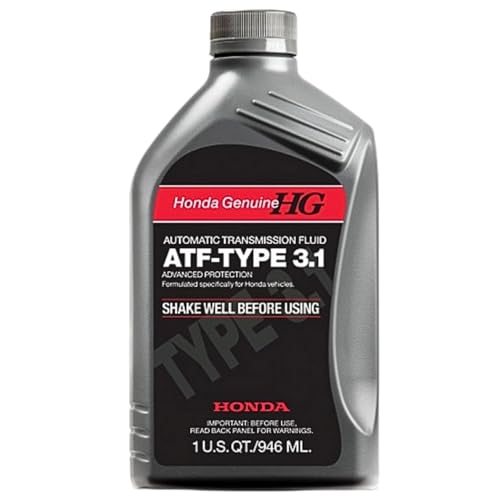The Acura MDX, since its debut in 2001, has been a notable contender in the luxury SUV segment, offering a blend of performance, comfort, and reliability. With its sleek design, spacious interior, and advanced technological features, the MDX has become a favored choice for those seeking a luxurious yet practical vehicle for both daily commuting and adventurous getaways.
Over the years, the MDX has seen several generational upgrades, each bringing forth enhanced performance, improved safety features, and modernized aesthetics, solidifying its position as a reputable luxury SUV.
The Acura MDX’s reputation for reliability and its ability to deliver a premium driving experience have contributed to its standing as a competitive option among other luxury SUVs in the market.
Key Takeaways:
- Understanding the Transmission System:
- The article provides a comprehensive overview of the Acura MDX’s transmission system across different generations, emphasizing the evolution and importance of maintaining the transmission fluid for optimal performance and longevity.
- Transmission Fluid Specifications:
- Detailed information regarding the recommended types and capacities of transmission fluid for each generation of the Acura MDX is provided, emphasizing the importance of adhering to manufacturer recommendations.
- Maintenance Intervals:
- The article outlines the manufacturer-recommended intervals for transmission fluid changes, factors affecting these intervals, and signs indicating a need for an earlier fluid change, aiding in preventative maintenance.

The transmission fluid plays a pivotal role in ensuring the smooth operation and longevity of the Acura MDX’s transmission system. This fluid serves as a lubricant for the moving parts within the transmission, reducing friction, preventing overheating, and ensuring seamless gear shifts.
Over time, the transmission fluid can degrade or become contaminated, which can lead to a host of transmission issues, including erratic shifting, slipping, or even complete transmission failure.
Regular maintenance, including checking and changing the transmission fluid as per the manufacturer’s recommendations, is crucial to prevent such issues. Adhering to the prescribed maintenance schedule ensures that the transmission operates efficiently, contributing to the overall performance and longevity of the vehicle.
Moreover, timely maintenance can also help in identifying potential issues before they escalate into major problems, thereby saving on costly repairs in the long run. The transmission fluid also affects fuel efficiency and ensures that the Acura MDX delivers a consistent driving experience, reinforcing the importance of regular transmission fluid maintenance.
By understanding the significance of transmission fluid maintenance and adhering to the recommended maintenance schedule, Acura MDX owners can ensure the optimal performance and longevity of their vehicles, enjoying a smooth and enjoyable driving experience for years to come.
2001-Now Acura MDX Transmission Fluid Capacity And Type
Acura typically recommends using its own brand of transmission fluid, known as Acura Automatic Transmission Fluid (ATF). The specific type of ATF may vary, but it’s often referred to as Acura ATF DW-1 or Acura Type-2.0 Transmission Fluid. It’s crucial to use the manufacturer-recommended transmission fluid to ensure the proper functioning and longevity of the transmission system.
As for the transmission fluid capacity, it can vary based on the specific model and generation of the Acura MDX. Generally, the transmission fluid capacity for vehicles like the Acura MDX ranges from 2.9 to 3.3 quarts for a drain and refill.
2022-Now Acura MDX
Recommended transmission fluid type: Acura ATF-Type 2.0.
- Advanced protection
- Formulated specifically for Honda vehicles
- Premium quality fluid developed for specific Honda applications
- Low viscosity formulation for optimal fuel economy
Transmission fluid capacity: 4.5-9.3 quarts.
| Transmission | Fluid capacity | Fluid type |
|---|---|---|
| AWD 10-speed automatic | Total fill: 9.3 quarts (8.8 liters) Drain and refill: 5.1 quarts (4.8 liters) | ATF Type 2.0 |
| FWD 10-speed automatic | Total fill: 8.8 quarts (8.3 liters) Drain and refill: 4.5 quarts (4.3 liters) | ATF Type 2.0 |
2017-2020 Acura MDX Facelift
Recommended transmission fluid type: Honda Genuine ATF-Type 3.1.
- Genuine Honda OEM Fluid – Formulated and tested by Honda engineers to meet the precise requirements of Honda automatic transmissions specifying ATF Type 3.1
- Optimized Shifting Performance – Provides smooth, consistent gear changes and stable performance across a wide range of operating temperatures
- Low-Viscosity Formulation – Helps improve fuel efficiency while maintaining reliable film strength and protection under load
- Enhanced Wear and Oxidation Resistance – Delivers long-term protection and helps extend transmission service life
Transmission fluid capacity: 3.5-7.7 quarts.
| Transmission | Fluid capacity | Fluid type |
|---|---|---|
| AWD 9-speed DCT | Total fill: 7.7 quarts (7.3 liters) Drain and refill: 3.5 quarts (3.3 liters) | ATF-TYPE 3.1 |
| FWD 9-speed DCT | Total fill: 6.9 quarts (6.5 liters) Drain and refill: 3.5 quarts (3.3 liters) | ATF-TYPE 3.1 |
2014-2016 Acura MDX
Recommended transmission fluid type: Acura ATF DW-1.
Transmission fluid capacity: 3.3-3.5 quarts.
| Transmission | Fluid capacity | Fluid type |
|---|---|---|
| AWD 9-speed DCT | Total fill: 7.7 quarts (7.3 liters) Drain and refill: 3.5 quarts (3.3 liters) | ATF-TYPE 3.1 |
| FWD 9-speed DCT | Total fill: 6.9 quarts (6.5 liters) Drain and refill: 3.5 quarts (3.3 liters) | ATF-TYPE 3.1 |
| AWD 6-speed automatic | Total fill: 7.9 quarts (7.5 liters) Drain and refill: 3.3 quarts (3.1 liters) | ATF DW-1 |
| FWD 6-speed automatic | Total fill: 7.6 quarts (7.2 liters) Drain and refill: 3.3 quarts (3.1 liters) | ATF DW-1 |
2010-2013 Acura MDX Facelift
Recommended transmission fluid type: Acura ATF DW-1.
Transmission fluid capacity: 3.3 quarts.
| Transmission | Fluid capacity | Fluid type |
|---|---|---|
| 6-speed automatic | Total fill: 8.5 quarts (8 liters) Drain and refill: 3.3 quarts (3.1 liters) | ATF DW-1 |
2007-2009 Acura MDX
Recommended transmission fluid type: Acura ATF Z1.
Transmission fluid capacity: 3 quarts.
| Transmission | Fluid capacity | Fluid type |
|---|---|---|
| 5-speed automatic | Total fill: 8.3 quarts (7.8 liters) Drain and refill: 3 quarts (2.8 liters) | ATF Z1 |
2004-2006 Acura MDX Facelift
Recommended transmission fluid type: Acura ATF Z1.
Transmission fluid capacity: 2.9 quarts.
| Transmission | Fluid capacity | Fluid type |
|---|---|---|
| 5-speed automatic | Total fill: 7.7 quarts (7.3 liters) Drain and refill: 2.9 quarts (2.7 liters) | ATF Z1 |
2001-2003 Acura MDX
- Recommended transmission fluid type: Acura ATF Z1.
- Transmission fluid capacity: 3.2 quarts.
| Transmission | Fluid capacity | Fluid type |
|---|---|---|
| 5-speed automatic | Total fill: 9 quarts (8.5 liters) Drain and refill: 3.2 quarts (3 liters) | ATF Z1 |
Acura MDX Transmission Overview
The transmission system in the Acura MDX is a sophisticated assembly designed to deliver power from the engine to the wheels efficiently and smoothly. Over the years, the MDX has been equipped with various types of transmissions, including automatic and Sequential SportShift automatic transmissions, which allow for manual shifting when desired.
These transmissions are engineered with advanced technologies to provide a seamless driving experience, whether navigating city streets or cruising on the highway.
The integration of features like paddle shifters and multiple gear ratios ensures that drivers have a responsive and engaging driving experience while also benefiting from improved fuel efficiency.
Evolution of the Transmission System across Different Generations of Acura MDX
- 2001 – 2003 1st Gen (YD1):
- The first-generation Acura MDX came with a 5-speed automatic transmission, providing a balance of performance and fuel efficiency.
- 2004 – 2006 1st Gen (YD1) Facelift:
- The transmission system remained largely unchanged, continuing with the 5-speed automatic transmission.
- 2007 – 2009 2nd Gen (YD2):
- The second generation saw the introduction of a more refined 5-speed automatic transmission with enhanced shift logic for smoother operation.
- 2010 – 2013 2nd Gen (YD2) Facelift:
- The MDX received a 6-speed automatic transmission, offering improved fuel efficiency and a better driving experience.
- 2014 – 2016 3rd Gen (YD3):
- The third generation was equipped with a 6-speed automatic transmission with Sequential SportShift, allowing for manual control when desired.
- 2017 – 2020 3rd Gen (YD3) Facelift:
- The transmission was upgraded to a 9-speed automatic with Sequential SportShift, providing more gear ratios for optimized performance and fuel efficiency.
- 2022 – Now 4th Gen (YD9):
- The latest generation comes with a 10-speed automatic transmission, offering a wide range of gear ratios for enhanced performance, smoother shifting, and improved fuel efficiency.
The evolution of the transmission system in the Acura MDX reflects Acura’s commitment to enhancing driving dynamics, fuel efficiency, and overall vehicle performance. Each generation brought refinements and advancements to the transmission system, ensuring that the Acura MDX remains a competitive and appealing choice in the luxury SUV segment.
Transmission Fluid Change Intervals
The manufacturer-recommended intervals for changing the automatic transmission fluid in the Acura MDX typically range between 60,000 to 100,000 miles, depending on the driving conditions and the specific model year.
It’s always advisable to refer to the owner’s manual of your particular Acura MDX model for the most accurate and up-to-date information regarding transmission fluid change intervals.
Factors Affecting the Transmission Fluid Change Intervals
- Driving Conditions:
- Severe driving conditions such as frequent stop-and-go traffic, driving in mountainous or off-road conditions, and towing can lead to a quicker degradation of the transmission fluid, necessitating more frequent changes.
- Transmission Fluid Quality:
- The quality of the transmission fluid used can also impact the change intervals. High-quality fluids may last longer and provide better protection for the transmission components.
- Transmission Wear:
- As the transmission wears over time, metal shavings and other debris can contaminate the transmission fluid, which may require more frequent fluid changes.
- Climate:
- Extreme temperatures, both hot and cold, can affect the lifespan of the transmission fluid and may require more frequent changes.
- Maintenance History:
- If the transmission fluid has not been changed as per the recommended intervals in the past, it may require more frequent changes moving forward.
Signs Indicating a Need for an Earlier Transmission Fluid Change
- Color and Odor:
- Fresh transmission fluid is typically red or light brown with a neutral odor. If the fluid turns dark brown or black and has a burnt smell, it’s time for a change.
- Erratic Shifting:
- If you notice erratic shifting or the transmission seems to be slipping, it could be due to old or low transmission fluid.
- Delayed Engagement:
- A delay in the engagement of the transmission when shifting from park to drive or reverse may indicate a need for a transmission fluid change.
- Transmission Noises:
- Unusual noises such as whining or clunking from the transmission could be a sign of old or low transmission fluid.
- Transmission Overheating:
- If the transmission temperature warning light comes on or you suspect the transmission is overheating, it may be due to old or low transmission fluid.
- Check Engine or Transmission Warning Lights:
- If any warning lights related to the engine or transmission illuminate on the dashboard, it’s advisable to check the transmission fluid and other related systems.
Cost of Transmission Fluid Change
The cost of a transmission fluid change for an Acura MDX can range from around $100 to $250 or more, depending on various factors. This price range typically includes the cost of the transmission fluid itself and the labor charges for the service.
Factors Affecting the Cost of Transmission Fluid Change
- Labor Rates:
- Labor rates can vary significantly from one service center to another and from one geographic location to another. Dealership service centers may charge higher labor rates compared to independent auto repair shops.
- Type of Transmission Fluid:
- The cost of the transmission fluid itself can also affect the overall cost of the service. High-quality, manufacturer-recommended transmission fluids may cost more than generic or lower-quality fluids.
- Amount of Transmission Fluid Required:
- The total amount of transmission fluid required for a complete change can also impact the cost. Some transmissions may require more fluid, especially if the torque converter is drained as well.
- Additional Services:
- If additional services are performed during the transmission fluid change, such as replacing the transmission filter or gasket, the cost will be higher.
- Geographic Location:
- The cost of living and the prevailing market rates in your geographic location can also affect the cost of a transmission fluid change.
Tips for Saving on Transmission Fluid Change Costs
- Shop Around:
- Get quotes from multiple service centers to compare prices. Independent auto repair shops may offer lower prices compared to dealership service centers.
- Use Coupons or Discounts:
- Look for coupons or discounts offered by auto repair shops or service centers. Some places may offer discounts for new customers or seasonal promotions.
- DIY (Do It Yourself):
- If you have the necessary skills and tools, consider changing the transmission fluid yourself. However, ensure you follow the manufacturer’s guidelines to avoid any issues.
- Buy Your Own Transmission Fluid:
- Purchase your own transmission fluid from a reputable supplier, which may be cheaper than buying it directly from the service center.
- Regular Maintenance:
- Adhering to the manufacturer-recommended maintenance schedule can prevent more costly repairs in the future. Regular maintenance can help identify and fix minor issues before they escalate into major problems.
- Educate Yourself:
- Understanding the basics of your vehicle’s transmission system and its maintenance needs can help you make informed decisions and avoid unnecessary services or charges.
Common Questions and Troubleshooting
- How often should I change the transmission fluid in my Acura MDX?
- The typical interval for changing transmission fluid ranges between 60,000 to 100,000 miles, depending on the driving conditions and the specific model year. It’s always advisable to refer to the owner’s manual for the most accurate information regarding transmission fluid change intervals.
- Can I use any type of transmission fluid in my Acura MDX?
- It’s crucial to use the manufacturer-recommended transmission fluid to ensure the proper functioning and longevity of the transmission system. Acura typically recommends using Acura ATF DW-1 or Acura HCF-2 Transmission Fluid, depending on the model year.
- Can I change the transmission fluid myself?
- Yes, with the right tools and knowledge, you can change the transmission fluid yourself. However, ensure you follow the manufacturer’s guidelines to avoid any issues.
- What happens if the transmission fluid level is too low or too high?
- Low transmission fluid levels can lead to erratic shifting, overheating, and even transmission failure. On the other hand, overfilled transmission fluid can cause foaming, loss of fluid, and transmission malfunction.
- How can I check the condition of the transmission fluid?
- You can check the condition of the transmission fluid by examining its color and odor. Fresh fluid is typically red or light brown with a neutral odor, while old or contaminated fluid may be dark brown or black with a burnt smell.
Troubleshooting Common Transmission Fluid Issues
- Erratic Shifting:
- If you experience erratic shifting, it could be due to old or low transmission fluid. Check the fluid level and condition, and consider changing the fluid if necessary.
- Delayed Engagement:
- A delay in the engagement of the transmission when shifting from park to drive or reverse may indicate a need for a transmission fluid change.
- Transmission Noises:
- Unusual noises such as whining or clunking from the transmission could be a sign of old or low transmission fluid.
- Transmission Overheating:
- Overheating can be caused by old or low transmission fluid. Check the fluid level and condition, and consider changing the fluid if necessary.
- Transmission Slipping:
- If the transmission seems to be slipping, it could be due to old or low transmission fluid. Check the fluid level and condition, and consider changing the fluid if necessary.
- Leakage:
- If you notice transmission fluid leaks, check the drain and filler plugs, transmission pan gasket, and the transmission cooler lines for any signs of leakage and repair as necessary.
Last update on 2025-12-19 / Affiliate links / Images from Amazon Product Advertising API


















